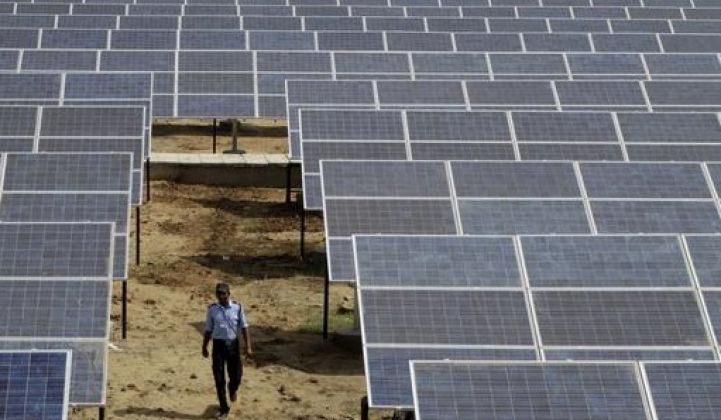India has released a year-by-year roadmap for its aggressive solar target of 100 gigawatts by 2022.
Rooftop solar is slated to account for 40 percent of the target, while larger grid-scale projects will make up the rest.

Rooftop PV will have to achieve astronomical growth, and quickly. The government calls for 200 megawatts of rooftop solar in 2015-16, but that number will have to balloon to 4,800 megawatts by 2017 to stay on track.
State electricity regulators will have to purchase solar as part of their portfolios, with an initial goal of 0.25 percent that will grow to 3 percent by 2022. As of June 30, India had just over 4,000 megawatts of installed solar.
Earlier this year, nearly 300 global companies committed to generate 266,000 megawatts of solar, wind, biomass and mini-hydro within the next decade. The investment is estimated to total more than $300 billion. One of the biggest pledges came from Japan's SoftBank Corp., together with Bharti Enterprises and Taiwan's Foxconn, to invest about $20 billion in solar projects in India.
The ambitious targets and impressive commitments may point to an energy transformation in India, but there are many challenges that remain. For one, there will need to be substantial investment in the electrical grid to support the level of renewables, especially distributed generation, that is being proposed.
Ideally, there will also need to be changes to the energy market. Many of these issues are being discussed at the top levels of government, as Prime Minister Modi has plans to bring electricity to 400 million homes that currently do not have it.
India’s adoption of distributed solar could be unique, as much of it may not be tied back to the larger grid. One report found that even with current grid expansion in India, as many as 75 million households may still be off-grid in 2024, which could open the door for microgrids and solar-plus-storage solutions.



